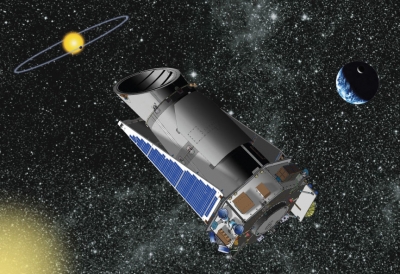
In 2009, NASA launched a spacecraft called Kepler to look for exoplanets. Kepler looked for planets in a wide range of sizes and orbits. And these planets orbited around stars that varied in size and temperature.
Kepler detected exoplanets using something called the transit method. When a planet passes in front of its star, it’s called a transit. As the planet transits in front of the star, it blocks out a little bit of the star’s light. That means a star will look a little less bright when the planet passes in front of it.
When a planet passes in front of a star as viewed from Earth, the event is called a “transit”. On Earth, we can observe an occasional Venus or Mercury transit. These events are seen as a small black dot creeping across the Sun—Venus or Mercury blocks sunlight as the planet moves between the Sun and us. Kepler finds planets by looking for tiny dips in the brightness of a star when a planet crosses in front of it—we say the planet transits the star.
Once detected, the planet’s orbital size can be calculated from the period (how long it takes the planet to orbit once around the star) and the mass of the star using Kepler’s Third Law of planetary motion. The size of the planet is found from the depth of the transit (how much the brightness of the star drops) and the size of the star. From the orbital size and the temperature of the star, the planet’s characteristic temperature can be calculated.
Picture Credit : Google

